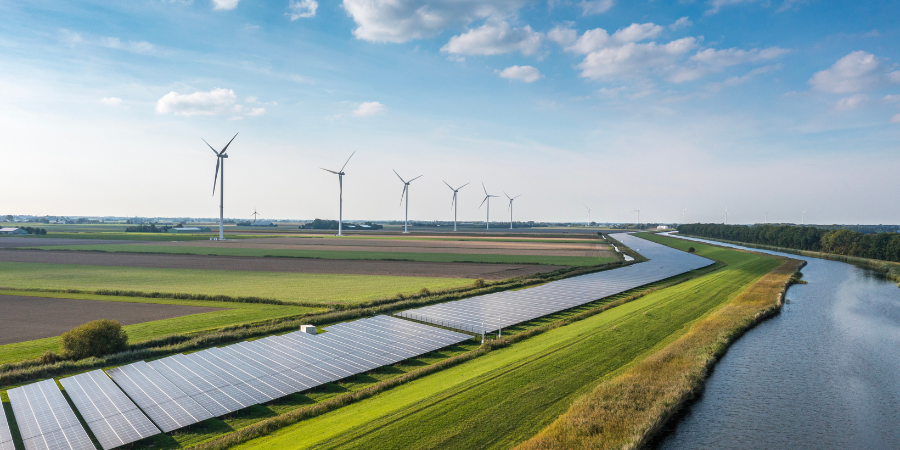An Overview
The global energy landscape is transforming significantly, driven by the increasing demand for sustainable and efficient energy solutions. Traditional energy models are being challenged by the need to reduce carbon emissions, optimise energy consumption, and harness renewable resources.
In this context, a revolutionary concept known as Energy-as-a-Service (EaaS) has emerged, offering a versatile and innovative approach to energy management. EaaS represents a paradigm shift that empowers businesses and consumers to access cleaner energy, enhance efficiency, and contribute to a greener planet.
EaaS is a business model that gives customers access to energy services without requiring them to make any upfront capital investments. Instead, customers pay a recurring fee for the energy services they consume. This model is similar to the software-as-a-service (SaaS) model, where customers pay a monthly subscription fee for access to software applications.
There are many different types of EaaS offerings available. Still, they all share the same basic premise: customers pay for the energy they use, not the equipment or infrastructure that delivers it. This can be a great way for businesses and consumers to reduce energy costs and improve efficiency.
Key Feature of Energy-as-a-Service
The global Energy-as-a-Service (EaaS) market is expected to grow to more than $120 Billion by 2028, with a CAGR of around 15% from 2023 to 2028.
- Customised Solutions: EaaS providers tailor energy solutions to meet individual customers' specific needs and preferences. Whether a small business, a large corporation, or a municipality, the services are designed to optimise energy consumption, minimise waste, and enhance efficiency.
- Technology Integration: EaaS leverages advanced technologies such as AI/ML and IoT to monitor and manage energy systems in real time. These technologies enable predictive analytics and proactive maintenance, increasing energy savings.
- Renewable Energy Integration: EaaS models actively incorporate renewable energy sources, such as solar, wind, and hydro, into the energy mix. By prioritising sustainable options, businesses and consumers can reduce their reliance on fossil fuels and significantly lower greenhouse gas emissions.
- Energy Risk Management: Energy price fluctuations and supply chain disruptions can pose significant business challenges. EaaS providers assume the risks associated with energy procurement, ensuring predictable costs and stable energy supplies.
- Financial Flexibility: Adopting an Energy-as-a-Service model often involves minimal upfront costs, as service providers typically offer various financing options, including performance-based contracts and leasing arrangements. This flexibility allows businesses to invest in energy-efficient technologies without straining their budgets.
Market Growth Drivers
EaaS is a rapidly growing market, and it is expected to continue to grow. This is due to several factors, including the increasing cost of energy, the growing demand for renewable energy, and the increasing focus on sustainability.
- Sustainability and Climate Goals: Increasing global awareness of climate change and the urgent need to reduce greenhouse gas emissions have prompted governments, businesses, and consumers to seek sustainable energy solutions. EaaS provides an avenue for achieving renewable energy integration and improving energy efficiency, aligning with sustainability goals.
- Cost Savings and Financial Incentives: EaaS models offer financial benefits through reduced energy consumption, minimised operational costs, and access to tax incentives or subsidies for adopting renewable energy sources. As businesses and consumers seek ways to optimise expenses, EaaS becomes an attractive option.
- Regulatory Support: Governments worldwide are increasingly implementing policies and regulations that incentivise adopting renewable energy and energy efficiency practices. EaaS aligns with these initiatives, making it easier for businesses to comply with regulatory requirements.
Recent Developments in the EaaS Market
There have been several recent developments in the EaaS space. Some of the most notable developments include:
- Integration of Decentralised Energy Systems: With the increasing adoption of distributed energy resources (DERs) like solar panels, wind turbines, and battery storage systems, EaaS providers may have developed innovative ways to integrate these decentralised systems into their service offerings. For example, EaaS companies might offer seamless integration of home solar installations with smart energy management systems to optimise energy consumption and maximise self-consumption.
- Microgrids and Energy Resilience: Microgrids, localised energy systems operating independently or in conjunction with the main grid, offer improved energy resilience. EaaS providers might have started offering microgrid solutions to critical infrastructure such as hospitals, data centres, and military bases, ensuring a reliable and uninterrupted energy supply during grid disruptions or emergencies.
- Blockchain and Smart Contracts: Blockchain technology could enhance transparency and security in EaaS transactions. Smart contracts based on blockchain may enable automated and trustless interactions between energy producers, consumers, and service providers, facilitating more efficient and seamless energy transactions.
- EaaS for Electrification and Mobility: As the adoption of electric vehicles (EVs) grows, EaaS providers might have developed solutions to support EV charging infrastructure and manage charging loads intelligently. EaaS offerings may include integrated solutions that combine renewable energy generation, battery storage, and smart charging infrastructure to promote electrification and decarbonisation of transportation.
- AI-Driven Energy Optimization: Artificial intelligence and machine learning advancements may have been incorporated into EaaS platforms to optimise energy consumption patterns further. AI algorithms can analyse data from various sources, such as weather forecasts and energy consumption patterns, to predict and optimise energy usage in real time.
Here are some examples of recent developments in EaaS:
1. In 2022, Google announced a new EaaS offering called Google Cloud for Sustainability. This offering gives businesses access to a suite of tools and services that can help reduce their energy consumption and improve their energy efficiency.
2. In 2021, Engie launched a new EaaS offering called Engie Solar as a Service. This offering gives businesses access to solar panels without requiring them to make any upfront capital investments.
3. In 2020, Siemens launched a new EaaS offering called Siemens Energy Efficiency as a Service. This offering provides businesses with access to energy-efficiency consulting services and software.
Our Perspective
The Energy-as-a-Service (EaaS) market represents a transformative shift in the energy industry, driven by the growing demand for sustainable, efficient, cost-effective energy solutions. As the world faces the urgent challenges of climate change and the need to transition towards greener alternatives, EaaS emerges as a powerful tool to achieve these goals. The market drives for EaaS are compelling, with a strong emphasis on sustainability, financial incentives, technology integration, flexibility, and regulatory support. As sustainability becomes a critical priority, businesses and consumers increasingly turn to EaaS to fulfil their environmental responsibilities and contribute to a cleaner planet.
The EaaS market is a hopeful way to pursue a sustainable energy future. Through collaboration, innovation, and a shared commitment to a greener world, EaaS has the potential to revolutionise energy consumption and contribute significantly to global efforts in mitigating climate change. Embracing Energy-as-a-Service is not merely a choice but a transformative step towards building a more sustainable, resilient, and prosperous future for future generations.





